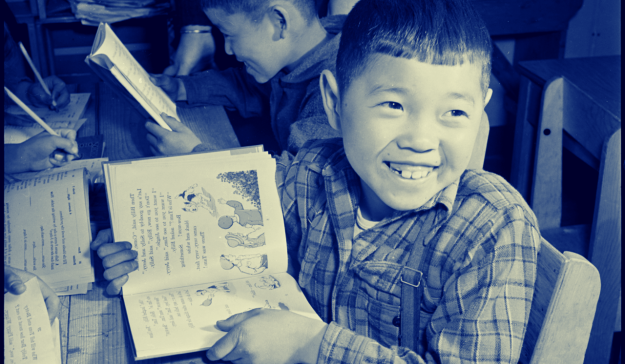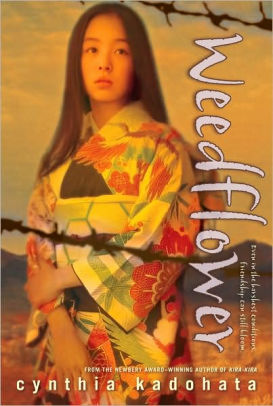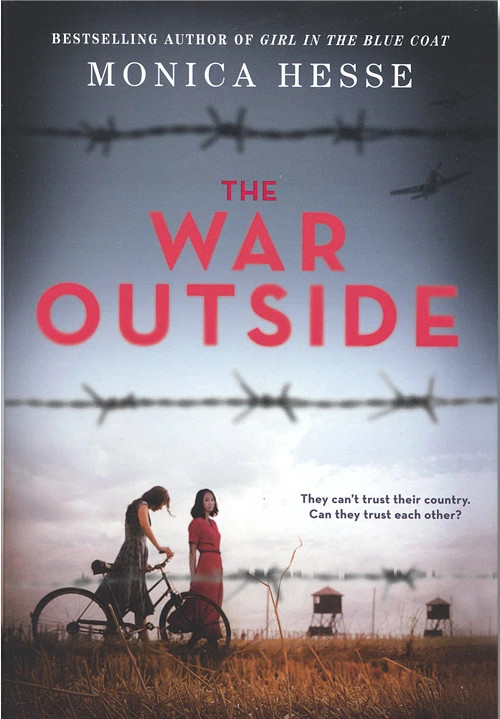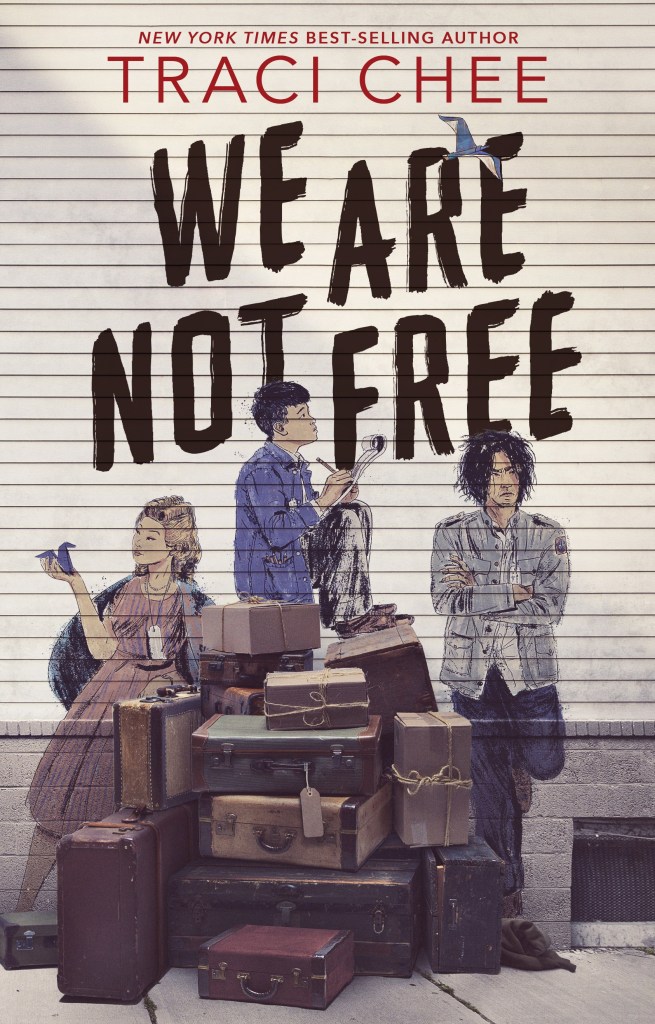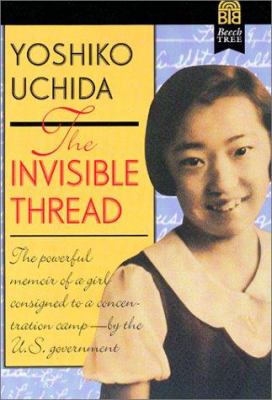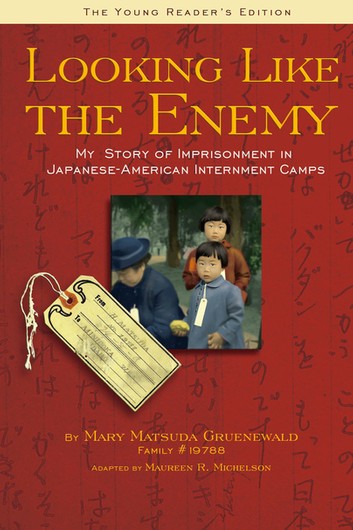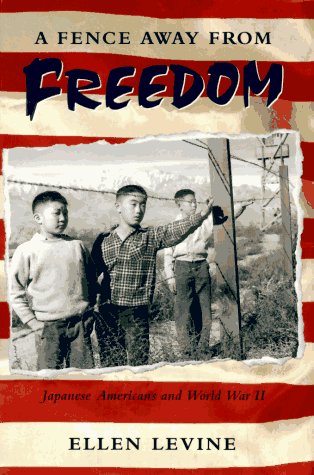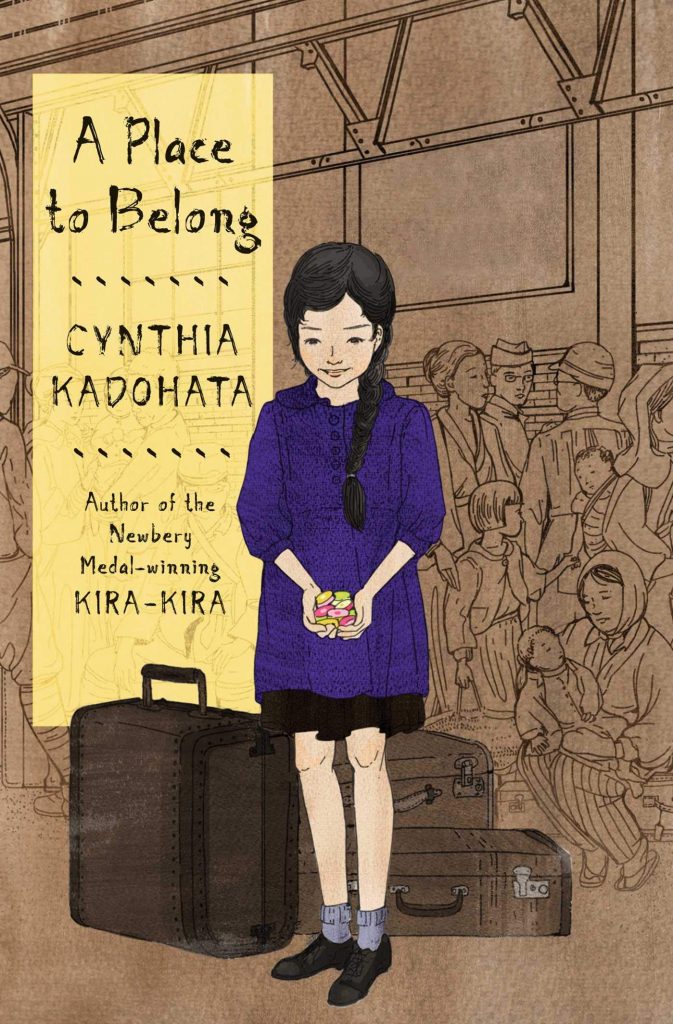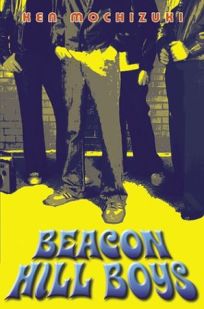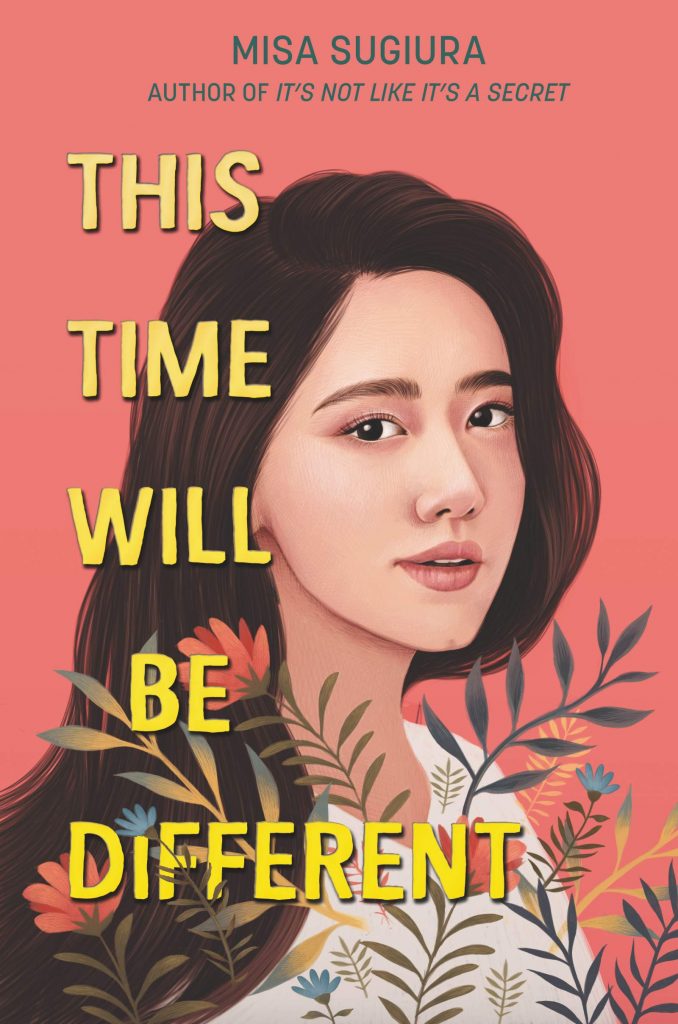February 12, 2021
In recent decades, many new books on the wartime experience of Japanese Americans have filled the shelves of bookstores and libraries. Of this ever-growing new crop of titles, many are geared specifically towards Young Adult (YA) readers. Here, Densho Content Director Brian Niiya highlights some classics and more recent arrivals that he thinks are worth spending some time with.
As a decidedly not-so-young adult, I am obviously not the intended audience for these books. But in my defense, I was once a young adult and, perhaps more pertinently, I am the father of a more recent young adult who is now, I suppose, an “old adult,” though, still in her twenties, a young one. And while I’ve ready a great many of the relevant YA books, unlike prior lists I’ve done on camp novels by Japanese Americans authors and camp centered memoirs, I have not read them all; thus, it is entirely possible that I’ve missed a good one or two.* I am also not including any of the recent spate of graphic novels on the incarceration experience; I’ll write about those separately at some point.
Now, with those caveats out of the way, let’s dig in:
Books Set in the Concentration Camps
Yoshiko Uchida (1921-1992) was a pioneering figure as a children’s book author whose works focused on Japanese and Japanese American topics. Uchida’s were some of the earliest young adult books on the incarceration experience. (Read about the very first here.) Journey to Topaz: A Story of the Japanese-American Evacuation (1971) was the first such book written by a Japanese American author. Based in part on Uchida’s own family’s removal and incarceration experience—though her protagonist, Yuki Sakane, is a decade younger than Uchida was at the time—Journey to Topaz undoubtedly introduced a generation of youth to the incarceration story.
Uchida wrote a sequel titled Journey Home (1978) that follows the Sakanes as they leave Topaz for Salt Lake City and eventually return to California. Both books ring with the authenticity of someone who had been there, and both incorporate many broader historical aspects of the story and mix-in historical events such as the shooting of James Hatsuaki Wakasa or the heroism of Sadao Munemori, albeit in fictionalized fashion. Both remain well worth reading today.
Cynthia Kadohata’s Weedflower centers on Sumiko Matsuda, an orphaned sixth grader when war breaks out. It follows Sumiko, following her and her family from their California home to the “San Carlos Racetrack” (seemingly a fictionalized version of the Santa Anita Assembly Center) and to Poston. Sumiko is an appealing heroine and the characters are believable, if a bit unusual. Though it runs through some of the stock historical episodes as if trying too hard to squeeze everything in, it is at least well researched and contains no glaring errors or implausibilities. It also includes Native American characters Sumiko meets at Poston and illustrates the importance of camp gardens in preserving the mental health of inmates like Sumiko.
Monica Hesse’s The War Outside (2018) is set at the family internment camp at Crystal City, Texas, and centers on two young women, seventeen year old Nisei Haruko Tanaka and sixteen year old Margot Krukow, the daughter of German immigrants. After forming an intense friendship, they dream of leaving together and having their own apartment in San Antonio, the closest major city. But as tensions close in on each of their families, each is forced to make a difficult choice about the nature of their friendship. Though the ending stretches credulity a bit, the author is mostly careful with the facts and in depicting the unusual nature of life in a non-War Relocation Authority internment camp.
Most recently, there is Traci Chee’s We Are Not Free (2020), which might be viewed as a contemporary version of Uchida’s 1970s books in that it follows a group of Japanese Americans from the San Francisco Bay Area (in this case from San Francisco Japantown) to Tanforan and Topaz and back. Chee’s approach is to focus on a group of teenage friends from the city, with each of the sixteen chapters written in the first person voice of a different one. (There are two exceptions to this: one chapter switches to having various narrators, while the first and last chapters are in the voice of the same character.) Using this approach, Chee is able to explore various storylines, including registration, military service, post-segregation Tule Lake, and leaving camp for the Midwest.
Though broadly accurate historically, it does embellish the travails faced by the incarcerated Japanese Americans in a number of places, something many contemporary accounts seem to do. I also found the words and attitudes of the characters to be unlike those of 1940s Nisei and much more like contemporary teenagers. While this may be questionable as history, I found myself not minding too much, as this may make the characters more relatable to its intended audience.
Incarceration Memoirs
Yoshiko Uchida’s The Invisible Thread (1991), written specifically for a YA audience, is actually her second—and lesser known—memoir. In the 1960s, she wrote the manuscript to what would become Desert Exile (1982), a work that became one of the most acclaimed and cited of the Nisei camp memoirs. In contrast to the earlier book The Invisible Thread, has an angrier tone (though I don’t think Uchida can ever really be described as “angry”) in contrasting her charmed pre-war life in Berkeley with the shock and injustice of wartime incarceration at Tanforan and Topaz, ending with her first day of work as a teacher at a Quaker school in Philadelphia after leaving camp. A lifetime of accumulated wisdom and years of writing for children position the author to produce a book that is moving and evocative, and that is both deeply personal and universal at the same time.
Mary Matsuda Gruenewald’s Looking Like the Enemy: My Story of Imprisonment in Japanese-American Internment Camps, Young Reader’s Edition (2010) is a version of the author’s excellent camp memoir minimally reworked for a teen audience. I’ve written about this book before in my rundown of camp memoirs.
(Two other books mentioned in that article by Lily Yuriko Nakai Havey’s Gasa Gasa Girl Goes to Camp and Jeanette S. Arakawa’s The Little Exile, are told from the point of view of children and might be of interest to younger readers as well.)
Non-Fiction Books
A lot of non-fiction books about the incarceration for younger readers have appeared in the last decade or two. Unfortunately, most are not very good. Nearly all were written by professional children’s book authors as opposed to authors with expertise in Japanese American history. Since the story of the incarceration is a complicated one, nearly all of these books are filled with errors large and small that editors and reviewers who are also not experts in the subject matter don’t catch. Many also rely on outdated scholarship and quote from the same popular sources, reducing the incarceration story to a series of cliches.
But there are a couple I can recommend, both of which are largely based on the words of incarcerated Japanese Americans themselves.
Ellen Levine’s A Fence Away From Freedom: Japanese Americans and World War II (1995) is based on interviews with former inmates and consists mostly of excerpts from those interviews grouped into chapters devoted to a specific topic. The interviewees skew towards resisters and activists and include many important historical figures. In addition to the core story, it also covers lesser-known stories such as the Manzanar Children’s Village and the incarceration of Japanese Latin Americans.
Like Levine’s book, Joanne Oppenheim’s Dear Miss Breed: True Stories of the Japanese American Incarceration During World War II and a Librarian Who Made a Difference (2006) consists mostly of primary source material, in this case, a collection of letters written by Japanese American children to San Diego librarian Clara Breed while they were incarcerated at Poston. The letters, which are in the collection of the Japanese American National Museum, have been the basis of an exhibition and film as well. The story of the dedicated librarian is a moving one, and the letters and other period memorabilia are presented in graphically interesting manner. It is a bit wordy and may be better suited to older teens and adults.
The Aftermath and Legacy of Incarceration
Cynthia Kadohata’s latest, A Place to Belong (2019) has an unusual setting for a book about Japanese Americans: a ravaged Japan in the years after World War II. Featuring Kadohata’s usual young teen female protagonist, the book imagines the life of a Japanese American family that renounces their citizenships in the crucible of post-segregation Tule Lake and goes “back” to Japan. Twelve year old Hanako and her five year old brother Akira face hunger, desperate orphan children, and the difficulties of learning a new language and culture, but they are buoyed by their grandparents’ love and their parents’ devotion to them. But the family has to face a difficult decision as to what the best path for their future will be.
Along with The War Outside, A Place to Belong takes the incarceration story beyond the more familiar one centered on the War Relocation Authority (WRA) administered camps. I was also particularly drawn to both of these books because my mother was at Crystal City with her family and subsequently found herself in post war Japan at about the same time as Hanako’s family.
The long legacy of the incarceration is also brought to fore in novels set thirty and seventy years later.
Ken Mochizuki’s Beacon Hill Boys (2002) is an autobiographical coming of age novel set in 1972 Seattle that features a memorable cast of Sansei characters navigating the travails of adolescence and the meaning of masculinity and of being Japanese American in a particular place and time. But hovering above everything is the shadow of the incarceration—and the unwillingness of Nisei parents to talk about it with their kids—that influences much of what happens some thirty years later.
Misa Sugiura’s This Time Will Be Different (2019) is set in present day Silicon Valley and skillfully weaves the incarceration story into very contemporary dramas faced by a group of high school students. Protagonist CJ Katsuyama is a high school junior who becomes politicized when her mother’s venture capitalist boss offers to buy the family business, a now struggling flower shop. That the boss’s family had agitated for the mass removal of Japanese Americans during World War II and had profited from buying up properties owned by Japanese Americans lead CJ and her Aunt Hannah to oppose the sale, while her mother—who has been subsidizing the business for years—supports it. CJ applies the lessons learned from her mother to try to stop the sale, which morphs into a larger movement to redress the wrongs of history. She also navigates a complex web of high school friendships and desires that ebb and flow with her growing politicization.
As is true of historical fiction in general, these YA books tell us as much about the time in which they were written as they do about the time they depict. Three of four books above published in 2018 or later, for instance, depict same-sex relationships, something that that is almost completely absent from incarceration accounts until the 2000s. All four also include author’s notes of some type that discuss the books’ origins (Chee’s was based in part on her family’s own history), historical liberties that were taken, and other useful background information. While I think these types of explanations are vital to any work of historical fiction, they have only become commonplace in recent years and are perhaps a reflection of our Wikipedia (and Densho!) era, when readers are used to having instant access to great amounts of information on whatever media they are consuming.
Nonetheless, whatever your taste or era, there should be a worthwhile YA book on this list for you—even if you are an “old adult”—or for the teenager in your life.
—
By Densho Content Director Brian Niiya
*I should also disclose that I was a pre-publication reader/advisor for two of the titles below, The War Outside and A Place to Belong. Descriptions of the books below also draw from previously published pieces on them in the Densho Resource Guide.
